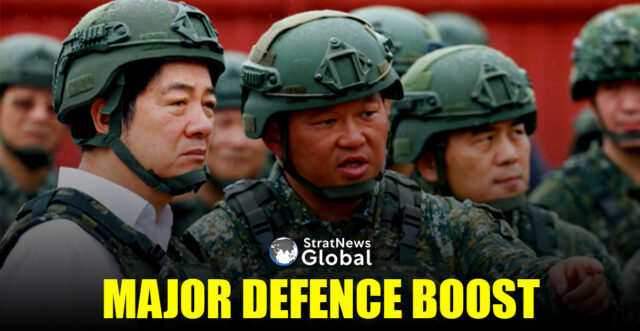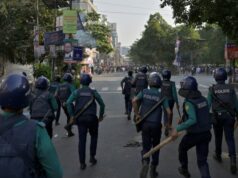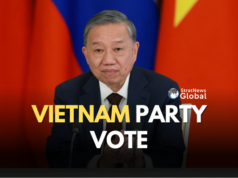Taiwan President Lai Ching-te said on Friday that he aims for defence spending to reach 5% of the island’s gross domestic product (GDP) before 2030, increasing a target for strengthening the military budget that Washington has long advocated.
The previous day, the government said next year’s defence budget would reach 3.32% of GDP, including for the first time spending on the coast guard, among other areas, to align with what Premier Cho Jung-tai said was the “NATO model”.
NATO Model
Taiwan was following the “NATO model” to include spending on the coast guard and veterans in total defence expenditure, he added.
Taiwan was including spending for the coast guard in its total defence budget for the first time, two senior officials briefed on the matter separately told Reuters, speaking on condition of anonymity.
“They are standing on the frontline,” said one, referring to the coast guard, which figures in regular stand-offs with China’s coast guard and would, in time of war, be pressed into the navy’s effort to defend Taiwan.
China Threats
The move comes as China, which views democratically governed Taiwan as its own territory, has ramped up military and political pressure over the past five years to assert its claims, which Taipei strongly rejects.
But Taiwan also faces calls from Washington to spend more on its own defence, mirroring pressure from the United States on Europe.
Visiting a navy base on Taiwan’s northeast coast, Lai said China’s threats had increased in recent years, and that he hoped defence spending by NATO standards could reach 5% of GDP before 2030.
“This not only demonstrates our country’s determination to safeguard national security and protect democracy, freedom, and human rights,” he said, in video images provided by his office.
Joint Regional Deterrence
“It also shows our willingness to stand shoulder to shoulder with the international community to jointly exert deterrent power and maintain peace and stability in the Indo-Pacific region.”
Lai added that the government would push for cooperation with “international allies” on weapons research and development as well as for production, though he did not give details.
The United States is Taiwan’s most important international arms supplier, despite a lack of formal diplomatic ties, but Taiwan’s own domestic weapons industry has built everything from fighter jets to cruise missiles.
(With inputs from Reuters)





